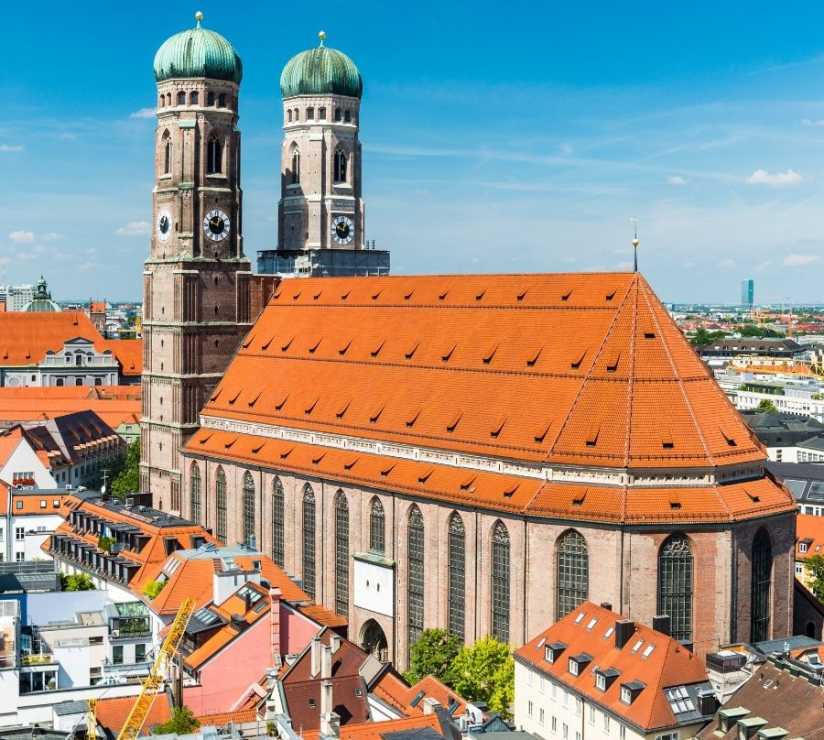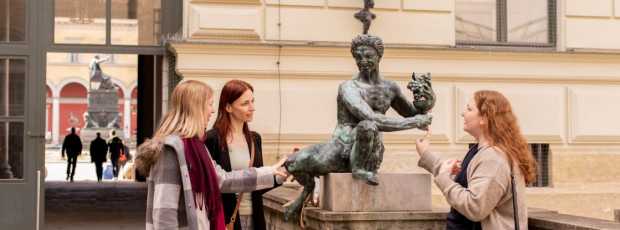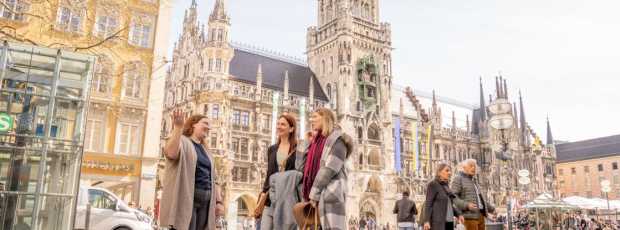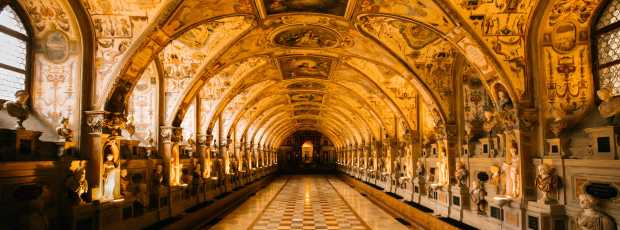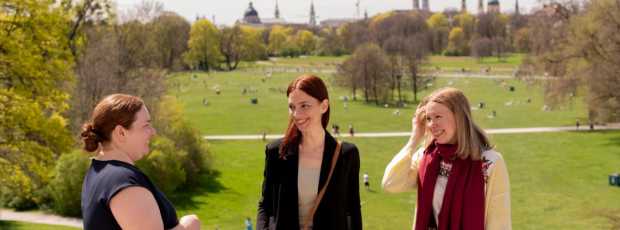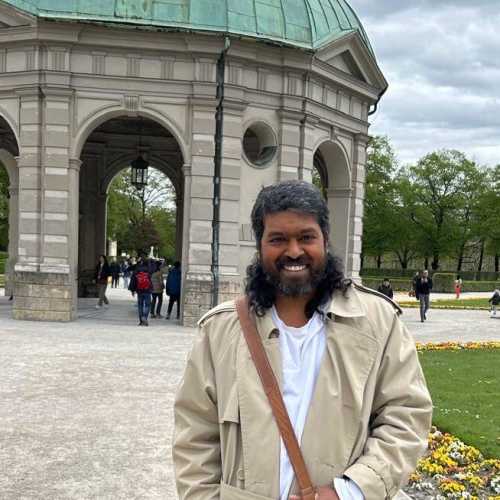Table Of Contents
- What Makes Munich Worth Your Time?
- Starting Your Sightseeing: The Old Town Reality Check
- What Should I Not Miss in Munich? The Honest Answer
- The Museum Quarter: Where Culture Meets Reality
- Beyond the Center: Where Munich Gets Interesting
- Day Trips from Munich: Beyond the Obvious
- Getting Around Munich: The S-Bahn and U-Bahn Reality
- Seasonal Considerations: When Munich Shows Its Best Face
- Practical Tips from Someone Who Lives Here
- What Munich Is Really Known For
- Three Most Memorable Places in Munich
- Planning Your Sightseeing in Munich: How Many Days Is Enough?
- Beyond the Guidebook: Hidden Gems and Local Secrets
- The Reality of Munich Tourism
- What to Do in Munich for 3 Days: A Realistic Itinerary
- The Bottom Line on Sightseeing in Munich
So here's the thing: I'm going to show you Munich through the eyes of someone who actually lives here. Not the sanitized version you'll find in glossy brochures, but the real deal – the sights that matter, the places locals actually go, and yes, a few tourist magnets that are genuinely worth your time.
What Makes Munich Worth Your Time?
Before we dive into specific sights, let me address the elephant in the room: Is Munich worth visiting for tourists? The short answer is yes, but not for the reasons most people think.
Munich isn't just Bavaria's capital – it's a living, breathing city where medieval architecture coexists with cutting-edge technology, where tradition and community thrive in open-air gathering spots, and where you can walk from a world-class museum to a genuine local hangout in five minutes. Unlike many European cities that feel frozen in tourist amber, Munich has managed to preserve its character while evolving into something genuinely modern.
The city sits in southern Germany, perfectly positioned for day trips to the Alps, fairy-tale castles, and historical sites. But honestly? You could spend a week here and barely scratch the surface of what the city itself offers.
Starting Your Sightseeing: The Old Town Reality Check
Let's get one thing straight: you're going to end up in Munich's old town whether you want to or not. Every walking tour, every guidebook, every well-meaning local will point you toward Marienplatz. Here's why that's actually okay, and how to do it right.
Marienplatz and the Neues Rathaus: Tourist Central Done Right
The Neues Rathaus (New City Hall) is a true Munich landmark – a neo-Gothic masterpiece that functions as the city’s main town hall and dominates the square with its intricate facade and famous Glockenspiel. Yes, the Glockenspiel is touristy. Yes, crowds gather at 11 AM, 12 PM, and 5 PM to watch mechanical figures dance. And yes, it's actually worth seeing once.
But here's the local trick: instead of fighting the crowds on the square, grab a coffee from one of the cafes with second-floor windows. You'll get a better view of the performance and the magnificent buildings surrounding the square without getting elbowed by tour groups.
The real magic happens when you step away from the main square. Wander down Petersberger Strasse or duck into the small courtyards between buildings. The old town isn't just Marienplatz – it's a network of medieval streets that most visitors never explore.
Climbing Alter Peter: The View Everyone Misses
Speaking of the old town, let's talk about Alter Peter – or as locals call it, Old Peter. This is Munich's oldest church, and its tower offers the best view of the city center. Most tourists skip it because it requires climbing 299 steps, and frankly, that works in your favor.
The climb is steep, the stairs are narrow, and halfway up you'll question your life choices. But when you reach the top, you'll understand why Munich residents still make this climb regularly. The view encompasses the entire city – from the Alps on clear days to the modern skyline north of the center. You'll see the city's rooftops spread out below, the Isar River snaking through the eastern districts, and if you're lucky, you might spot locals sunbathing in the English Garden.
Peter's Church itself is worth a quick look – it's been here since the 12th century, and its simple interior feels refreshingly authentic after all the baroque excess you'll encounter elsewhere in Bavaria.
Looking for a private city experience in Munich?
Explore the city with a local who plans a private day just for you; no groups, no scripts.
What Should I Not Miss in Munich? The Honest Answer
This is the question I get asked most often, and my answer usually surprises people. The things you absolutely shouldn't miss in Munich aren't necessarily the most famous sights – they're the experiences that give you a real sense of what makes this city special.
The English Garden: Europe's Largest Urban Park
Forget Central Park or Hyde Park – the English Garden is one of the world's largest urban parks, and it's where Munich really comes alive. This isn't just a pretty green space; it's the social heart of the city.
The Englischer Garten stretches from the city center all the way into the northerly city, covering more ground than most visitors realize.
Start at the Eisbach wave, where locals surf year-round in a man-made river wave. Yes, surfing in Munich is a thing, and watching wetsuit-clad surfers tackle the rushing water while businesspeople cross the bridge above is quintessentially Munich weird.
Walk north to the Chinese Tower, which sits in the middle of one of Munich's most famous gardens. The tower itself is a replica of the pagoda in London's Kew Gardens, built in the 18th century when English-style gardens were all the rage. The beer garden here serves 7,000 people on busy days, and unlike the tourist-heavy beer halls downtown, this one attracts a genuine mix of locals and visitors.
But don't stop there. Continue north to the Japanese Tea House, where you can participate in traditional tea ceremonies on weekends. It's a hidden gem that most tourists never find, tucked away in a quiet corner of the garden where you'll forget you're in the middle of a major city.
Beer Gardens vs. Beer Halls: Know the Difference
Here's something most visitors get wrong: Munich's beer culture isn't just about Oktoberfest and touristy beer halls. The real action happens in beer gardens, and there's a crucial difference.
Beer halls are indoor venues that serve food and beer year-round. Places like Hofbräuhaus are beer halls – they're fun, they're authentic to a degree, but they're also designed for tourists. The locals you'll meet there are usually showing off their city to out-of-town friends.
Beer gardens, on the other hand, are outdoor spaces traditionally attached to breweries. They're seasonal (roughly April to October), they're social in a way that beer halls can't match, and they're where Munich residents actually spend their summer evenings.
My recommendation? Visit at least two classic local spots during your trip. The Chinese Tower is worth it for the experience and scenic setting, while Augustiner-Bräu is a must for the beer. Augustiner is Munich’s oldest brewery and the last major one still owned by locals rather than international corporations. Their venue near the city center pours the freshest beer in town, served straight from traditional wooden barrels.
The Museum Quarter: Where Culture Meets Reality
Munich's museum scene is world-class, but most visitors approach it all wrong. They try to see everything in a day, they follow generic recommendations, and they end up exhausted and underwhelmed.
Deutsches Museum: Germany's Smithsonian
The Deutsches Museum is one of the world's largest science and technology museums, and it's absolutely worth visiting – but not the way most people do it. This place is massive, covering everything from mining to space exploration, and trying to see it all in one visit is a recipe for museum fatigue.
Instead, pick two or three sections that genuinely interest you and explore them thoroughly. The aviation section is spectacular, with full-size aircraft suspended from the ceiling. The mining section lets you walk through recreated mine shafts. The physics demonstrations happen throughout the day and are fascinating even if you hated science in school.
Pro tip: The museum is located on an island in the Isar River, which makes it a perfect stop during a walk along the riverbank. Many visitors miss this entirely – they take the S-Bahn or U-Bahn directly to the museum and miss one of Munich's most pleasant walks.
The Kunstareal: Art District Done Right
Munich's art district, the Kunstareal, houses three major museums within walking distance of each other. Most tourists try to hit all three – the Alte Pinakothek, Neue Pinakothek, and Pinakothek der Moderne – in a single day. Don't do this to yourself.
Pick one museum and really experience it. The Alte Pinakothek houses one of the world's finest collections of European paintings from the 14th to 18th centuries. The Pinakothek der Moderne covers 20th and 21st-century art, design, and architecture. Each deserves at least half a day.
The real joy of the Kunstareal isn't just the museums – it's the neighborhood. Between museum visits, walk through the surrounding streets. This is where Munich's art students live and work, where you'll find small galleries, independent bookshops, and cafes that cater to locals rather than tourists.
Beyond the Center: Where Munich Gets Interesting
Once you've covered the obvious sights, Munich's real character emerges in the neighborhoods and attractions that most visitors skip entirely.
Nymphenburg Palace: Royal Excess Worth Seeing
Nymphenburg Palace is Munich's answer to Versailles, and it's genuinely spectacular. Built as a summer residence for the Bavarian royal family, the palace complex includes the main building, extensive gardens, and several smaller palaces scattered throughout the grounds.
The palace was commissioned by Elector Ferdinand Maria in the 17th century and expanded over the centuries by successive rulers, most notably King Ludwig I. The baroque architecture is impressive, but the real draw is the gardens – they're massive, beautifully maintained, and perfect for a leisurely afternoon walk.
Don't miss the Marstallmuseum, which houses the royal carriages and sleighs. It sounds boring, but these vehicles are works of art in their own right, decorated with gold leaf and intricate carvings that showcase the wealth and power of Bavaria's former rulers.
The palace is easily accessible by U-Bahn, making it a perfect half-day trip from the city center. Unlike many royal palaces, Nymphenburg doesn't feel like a museum – it feels like a place where people actually lived.
Olympic Park: 1972 Architecture That Still Impresses
Munich's Olympic Park is a masterpiece of 1970s architecture that somehow manages to look futuristic even today. Built for the 1972 Summer Olympics, the complex includes the Olympic Stadium, Olympic Hall, and the famous tent-like roof structure that covers much of the park.
The Olympic Stadium is worth visiting even if there's no event happening. The architecture is stunning – the sweeping roof supported by cables creates a sense of lightness that's remarkable for such a large structure. You can take guided tours that include access to areas normally closed to the public, including the roof itself.
But the real reason to visit Olympic Park is the BMW Welt next door. This isn't just a car showroom – it's an architectural marvel that houses BMW's delivery center, museum, and exhibition space. The building itself is worth seeing, with its double-cone design and sweeping glass facade.
The BMW Museum is small but well-curated, tracing the company's history from aircraft engines to electric vehicles. Even if you're not a car enthusiast, the design and engineering on display is impressive.
What if your day in Munich was planned by someone who knows it — and you?
City Unscripted matches you with a local host who creates a private experience based on your interests, not a set route.
Day Trips from Munich: Beyond the Obvious
Munich's location in southern Germany makes it an ideal base for exploring Bavaria and beyond. But most visitors make the same day trip mistakes – they go to the most famous places during peak times and wonder why they're fighting crowds.
Neuschwanstein Castle: The Fairy Tale Everyone Visits
Let's address the elephant in the room: Neuschwanstein Castle. Yes, it's touristy. Yes, it's crowded. Yes, it's worth seeing anyway.
King Ludwig II's fairy-tale castle inspired Disney's Sleeping Beauty Castle, and it's genuinely one of the most beautiful buildings in Europe. The interior is over-the-top in the best possible way – Ludwig spared no expense in creating his romantic vision of a medieval castle.
But here's how to do it right: book your tickets in advance, arrive early, and don't just focus on the castle itself. The surrounding area is stunning, with lakes, mountains, and hiking trails that most visitors ignore. The nearby town of Füssen is charming and far less crowded than the castle grounds.
If you're feeling ambitious, combine Neuschwanstein with a drive along the Romantic Road, one of Germany's most scenic routes. The entire route stretches from Würzburg to Füssen, passing through medieval towns and countryside that looks like it came straight out of a fairy tale.
Dachau Concentration Camp: Confronting History
This is a difficult but important day trip. The Dachau Concentration Camp Memorial Site is located about 30 minutes from Munich by S-Bahn, and it's one of the most sobering and educational experiences you can have in Germany.
Dachau was the first Nazi concentration camp, opened in 1933, and it served as a model for other camps throughout the Holocaust. The memorial site preserves the camp's history while honoring the memory of the more than 40,000 people who died there.
The visit is emotionally challenging, but it's crucial for understanding 20th-century history and the importance of defending human rights. The museum provides context and detailed information about the camp's operation and the experiences of prisoners.
Most visitors spend 3-4 hours at the site. The audio guide is excellent and provides personal stories from survivors and liberation witnesses. Plan for this to be a heavy but important part of your Munich experience.
The Berchtesgaden Area: Natural Beauty and Complicated History
The Berchtesgaden area, about two hours south of Munich, offers some of Germany's most spectacular alpine scenery. The region is home to Königssee, a pristine mountain lake surrounded by dramatic peaks, and Salzbergwerk, historic salt mines that offer underground tours.
The area also has a complicated history – it was the location of Hitler's mountain retreat, the Eagle's Nest. Today, the site serves as a restaurant and tourist attraction, but it's important to understand the historical context. The region has done an excellent job of acknowledging this history while focusing on its natural beauty and cultural heritage.
This day trip requires a full day and ideally a car, but the scenery is worth the effort. The winding mountain roads offer views that rival anything in the Alps, and the area feels completely different from Munich – rural, traditional, and deeply connected to the natural landscape.
Getting Around Munich: The S-Bahn and U-Bahn Reality
Munich's public transportation system is efficient, clean, and comprehensive. The S-Bahn connects the city center to suburbs and nearby towns, while the U-Bahn covers the urban core and closer neighborhoods.
Here's what you need to know: buy a day pass if you're planning to use public transport more than twice. The ticket machines are available in English, and the system operates on an honor system – you validate your ticket when you board, but there are no turnstiles. Don't try to cheat the system; ticket inspectors are common and fines are expensive.
The S-Bahn is your gateway to day trips – it connects Munich to Dachau, provides access to hiking trails in the nearby mountains, and links to regional trains that serve destinations like Neuschwanstein Castle. The U-Bahn is perfect for getting around the city quickly, with stations near all major attractions and neighborhoods.
Most importantly, don't be afraid to walk. Munich is a compact city, and many attractions are within walking distance of each other. The city center is particularly walkable, and you'll see much more on foot than you will underground.
Seasonal Considerations: When Munich Shows Its Best Face
Munich is a year-round destination, but each season offers different experiences and challenges.
Spring and Summer: Beer Garden Season
From April to October, Munich embraces the outdoors. Seasonal venues open for alfresco dining and drinks, outdoor activities become abundant, and the city’s parks fill with locals and visitors soaking up the sun. This is peak tourist season, expect bustling crowds and higher prices, but it’s also when the city feels most energetic and alive.
Summer evenings in Munich are magical – the light lasts until nearly 10 PM, a lot of establishments stay open late, and the entire city seems to be outside. The English Garden becomes a massive outdoor living room, with people picnicking, playing frisbee, and enjoying the long days.
Fall: Oktoberfest and Autumn Colors
Oktoberfest runs from mid-September to early October, and if you're planning to visit during this time, book accommodations well in advance. The festival is a genuine cultural experience, not just a tourist attraction, but it also transforms the entire city. Hotels are expensive, restaurants are crowded, and the atmosphere is festive but chaotic.
If you're not interested in Oktoberfest, consider visiting in late October or November. The crowds thin out, prices drop, and the city's parks are beautiful with autumn colors.
Winter: Christmas Markets and Cozy Atmosphere
Munich's Christmas markets are among Germany's best, and the city takes on a cozy, intimate atmosphere during winter months. The main Christmas market on Marienplatz is touristy but atmospheric, with wooden stalls selling traditional crafts, food, and Glühwein (mulled wine).
Winter is also the best time to visit museums and indoor attractions without crowds. The city's cafes and restaurants offer a warm refuge from the cold, and the shorter days make it easier to focus on specific neighborhoods rather than trying to cover too much ground.
Tip
We match you with the right host, not just any guide.Want to experience the real Munich with someone who lives there?
A fully private experience, planned and led by a local host who tailors the day to you
Practical Tips from Someone Who Lives Here
Let me share some practical advice that will make your sightseeing in Munich more enjoyable and authentic.
Where to Stay: Neighborhoods That Make Sense
Most visitors stay in the city center, which is convenient but expensive and touristy. Consider staying in Schwabing, the university district north of the center. It's well-connected by U-Bahn, filled with restaurants and bars that cater to locals, and significantly cheaper than downtown hotels.
Alternatively, Glockenbachviertel is Munich's creative quarter, with independent shops, galleries, and cafes. It's walking distance from the city center but feels like a real neighborhood rather than a tourist zone.
Eating Like a Local: Beyond Bratwurst and Pretzels
Munich's food scene extends far beyond traditional Bavarian cuisine. The city has a large Turkish population, which means excellent döner kebab and Turkish restaurants. There's also a growing Asian food scene, particularly Vietnamese and Thai restaurants.
For traditional food, skip the tourist restaurants around Marienplatz and head to neighborhood establishments. Ratskeller München, tucked beneath the city hall in the basement of the Neues Rathaus, is touristy but serves genuine Bavarian food in a beautiful setting.
Shopping: Markets and Local Finds
The Viktualienmarkt, Munich's famous food market, is worth visiting for the atmosphere and local specialties. It's been operating since 1807 and offers everything from fresh produce to traditional Bavarian delicacies.
For souvenirs, skip the shops around Marienplatz and head to the smaller streets in the old town or the Glockenbachviertel. You'll find unique items and better prices away from the main tourist areas.
What Munich Is Really Known For
So what is Munich best known for? Ask most people and they'll say Oktoberfest, beer, and lederhosen. That's not wrong, but it's incomplete.
Munich is known for its unique ability to balance tradition with innovation. It's home to major international corporations like BMW and Siemens, but it's also fiercely protective of its cultural heritage. It's a city where you can attend a world-class opera performance in the evening and watch locals surf in the English Garden the next morning.
The city is famous for its beer culture, but that culture is about community as much as alcohol – just as likely to be found under chestnut trees as in the shadow of the town hall. Beer breweries and the gardens aren't just places to drink – they're social institutions where strangers share tables, families spend entire afternoons, and business deals are made over Mass (liter glasses) of beer.
Munich is also known for its proximity to the Alps and its role as a gateway to Bavaria. It's a city that offers urban sophistication with easy access to natural beauty, making it unique among major European cities.
Three Most Memorable Places in Munich
If I had to pick three places that capture Munich's essence, they would be:
The English Garden at sunset: Watching the city wind down as locals gather under the trees, surfers ride the Eisbach wave, and golden light filters through the chestnut branches. It's pure Munich – unpretentious, beautiful, and alive.
Alter Peter's tower on a clear day: The climb is challenging, but the view encompasses everything that makes Munich special – the medieval old town, the modern city spreading in all directions, and the Alps on the horizon. It's a perspective that helps you understand how this city fits into the larger landscape of Bavaria and southern Germany.
A traditional beer garden on a summer evening: Not for the beer (though it's excellent), but for the social experience. Watching families, friends, and strangers share tables, play cards, and enjoy the simple pleasure of being outside together. It's community in its purest form.
Ready to plan your perfect day in Munich?
Start your experiencePlanning Your Sightseeing in Munich: How Many Days Is Enough?
How many days in Munich is enough? The honest answer depends on what you want to see and how deeply you want to explore.
For a basic introduction to Munich – hitting the major sights, visiting a beer garden, and getting a feel for the city – three days is sufficient. You can cover the old town, English Garden, and one major museum, with time for a day trip to Neuschwanstein Castle.
For a more thorough exploration that includes multiple museums, several neighborhoods, and a couple of day trips, plan for five to seven days. This gives you time to experience the city's rhythm rather than just checking off sights.
If you're using Munich as a base for exploring Bavaria, you could easily spend two weeks here. The city's location makes it ideal for day trips to Salzburg, Nuremberg, the Romantic Road, and the Bavarian Alps.
Beyond the Guidebook: Hidden Gems and Local Secrets
Every city has its hidden gems, and Munich is no exception. Here are a few places that most tourists never discover:
Maximilianstrasse's Hercules Hall: This historic venue hosts classical concerts in an intimate setting that feels worlds away from the tourist crowds. The acoustics are extraordinary, and the architecture provides a glimpse into Munich's 19th-century cultural life.
The Isar River beaches: Yes, Munich has beaches – sandy areas along the Isar River where locals sunbathe, barbecue, and swim during summer months. They're not tropical paradise, but they're uniquely Munich.
Max-Joseph-Platz in the early morning: This elegant square is surrounded by magnificent buildings including the National Theatre and the Residenz. Most visitors see it during the day when it's busy with tourists, but early morning reveals its true character – quiet, dignified, and beautiful.
The courtyards of the Residenz: The main palace complex is well-known, but many visitors miss the smaller courtyards and gardens that offer peaceful retreats from the busy streets outside.
The Reality of Munich Tourism
Let me be honest about something: Munich is a popular tourist destination, and during peak season, it can feel overrun. The old town gets crowded, the major attractions have lines, and prices in tourist areas are inflated.
But here's the thing – Munich's popularity is earned. The city has managed to preserve its character while accommodating millions of visitors each year. The key is knowing when and where to go to avoid the worst crowds and find authentic experiences.
Visit popular attractions early in the morning or late in the afternoon. Eat at restaurants that serve locals, not just tourists. Spend time in neighborhoods rather than just racing between sights. Take breaks in parks rather than trying to see everything in one day.
Munich rewards visitors who approach it with curiosity rather than just checking items off a list. The city has layers of history, culture, and daily life that reveal themselves to patient observers.
What to Do in Munich for 3 Days: A Realistic Itinerary
Since most visitors have limited time, here's a practical three-day itinerary that balances must-see sights with authentic local experiences:
Day 1: Old Town and City Center Start with Marienplatz and the town hall at Neues Rathaus, but don't linger too long. Climb Alter Peter for the city view, then explore the smaller streets around the old town. Visit Peter's Church, walk through the pedestrian zone, and end at the Viktualienmarkt for lunch. Spend the afternoon at the Residenz or one of the nearby museums. End with dinner at a traditional restaurant in the old town.
Day 2: English Garden and Museums Start at the Eisbach wave, walk through the English Garden to the Chinese Tower beer garden for lunch. Spend the afternoon at the Deutsches Museum or one of the Pinakothek museums. End with dinner in Schwabing or the university district.
Day 3: Day Trip or Extended City Exploration Either take a day trip to Neuschwanstein Castle or spend the day exploring neighborhoods like Glockenbachviertel, visiting Nymphenburg Palace, or taking a more relaxed approach to the city with outdoor activities and local experiences.
This itinerary provides a good balance of major sights, cultural experiences, and local flavor without trying to do too much in too little time.
The Bottom Line on Sightseeing in Munich
Munich is a city that rewards both casual visitors and serious explorers. Its major attractions are genuinely worth seeing, but its real charm lies in the daily rhythms of local life – the morning commute along the Isar River, the afternoon break in a beer garden, the evening stroll through the English Garden.
Don't try to see everything. Don't feel obligated to love every sight. Don't assume that touristy means inauthentic. Munich has been welcoming visitors for centuries, and it's learned how to share its treasures while maintaining its character.
The best sightseeing in Munich happens when you balance the famous with the everyday, the historical with the contemporary, the planned with the spontaneous. Take time to sit in a park, strike up a conversation in a beer garden, and notice the details that make this city unique.
After all, Munich isn't just a collection of sights to be seen – it's a living city to be experienced. And that experience is what you'll remember long after you've forgotten which museum you visited on which day.
Looking for more ways to experience Munich like a local? Check out our guide to things to do in Munich for insider tips on everything from hidden restaurants to secret viewpoints. Or explore our curated Munich experiences for unique ways to connect with the city's culture and community.
What if your day in Munich was planned by someone who knows it — and you?
City Unscripted matches you with a local host who creates a private experience based on your interests, not a set route.
Want to experience the real Munich with someone who lives there?
A fully private experience, planned and led by a local host who tailors the day to you
